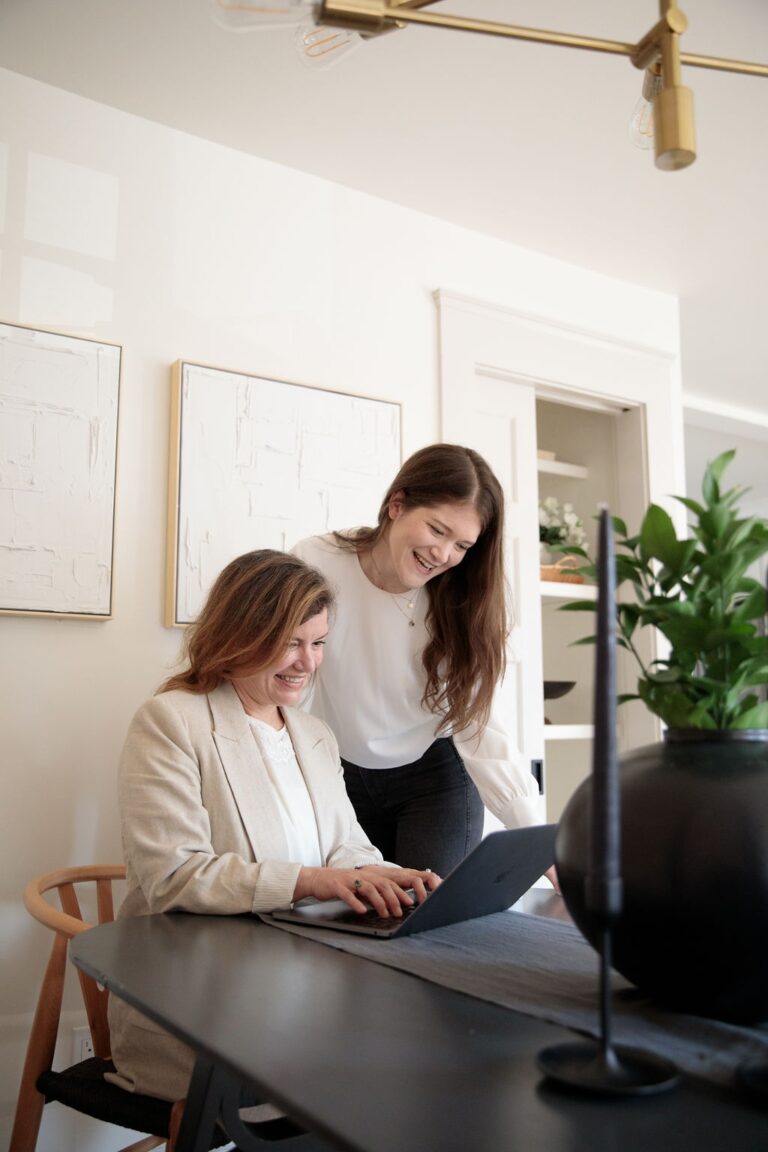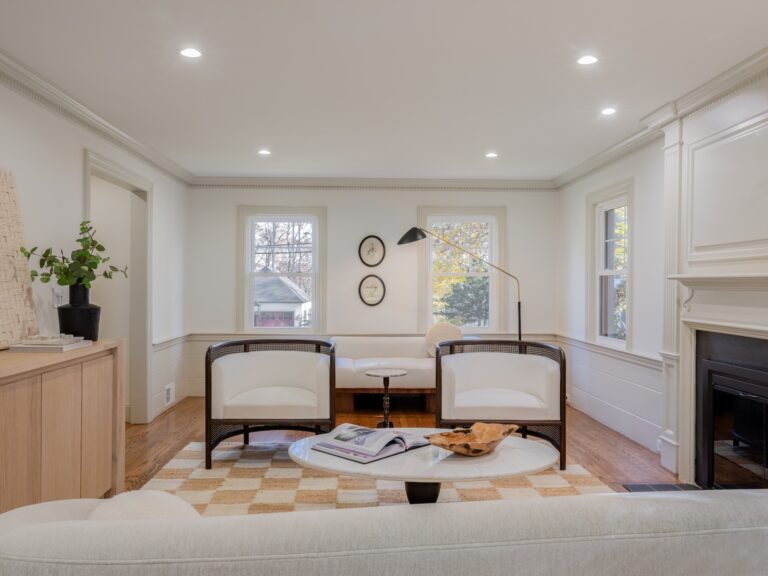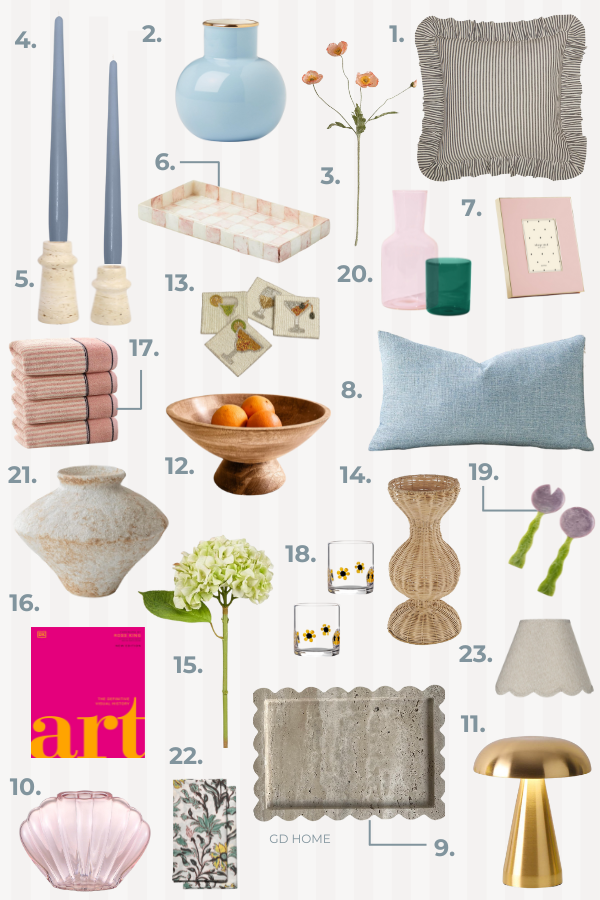We Tested 4 Exterior Neutral Paint Colors: Here’s Our Favorite
Picking a paint color for your house is high-stakes, but after testing several exterior neutral paint colors, my mom and I think we found the best one. Here’s our ranking of the best exterior neutral paint colors, from worst to absolute best.
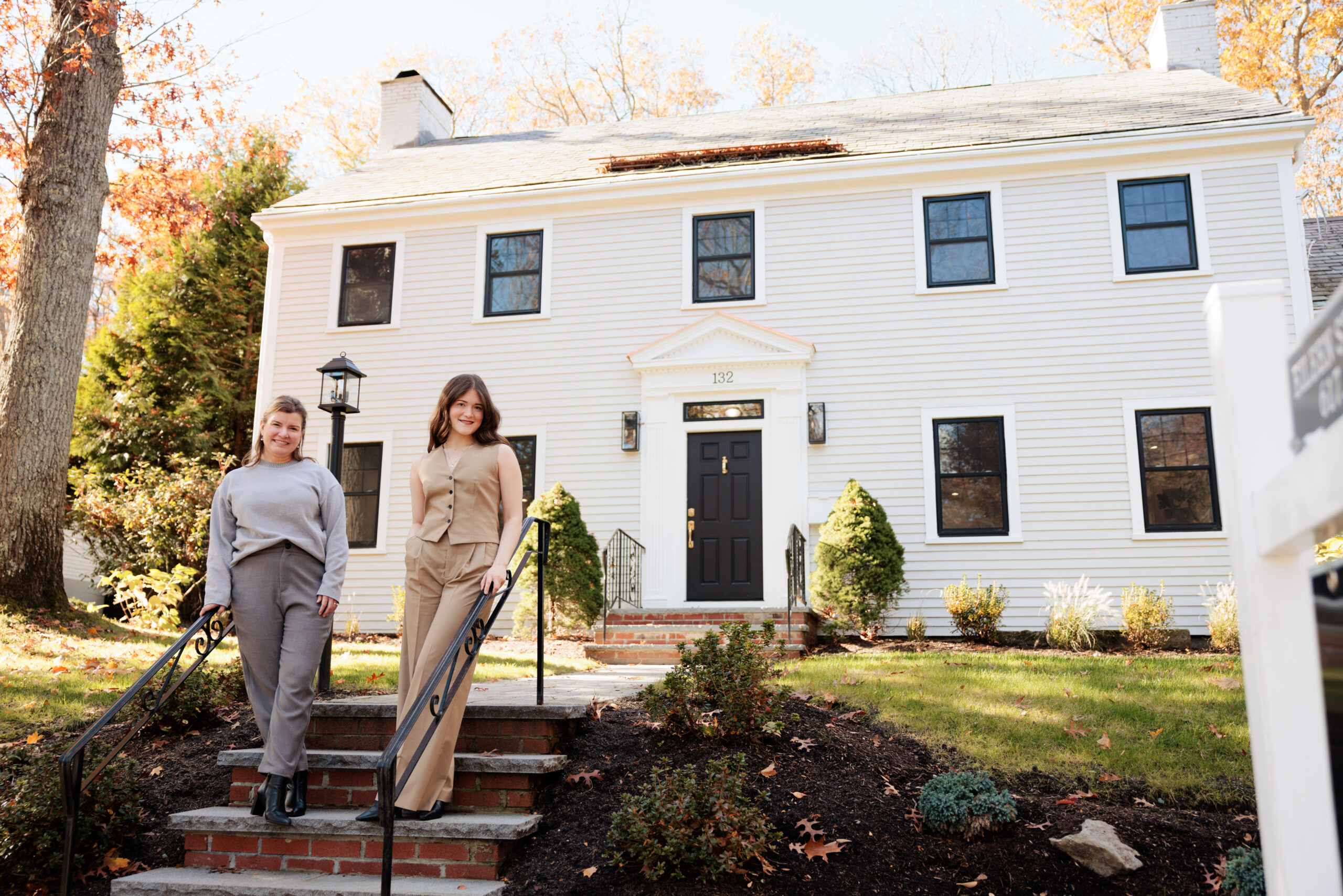
Let’s face it: painting the exterior of your house is no small task. It’s costly, time-consuming, and labor-intensive. There’s no room for mistakes, which means you need to get the color right the first time.
When my mom and I embarked on our family home gut renovation (check out Project Brookline for all the details), we started by transforming the exterior of the house. The old paint was chipping off the siding and trim, and layers and layers of paint were peeling below that.
In short, our house was a mess.
The pressure was on to select the perfect exterior siding and trim color to wow potential buyers. We narrowed our choices down to 4 Benjamin Moore paint colors, purchased samples, and tested them. Now, we’re ready to share the results!
If you’re unsure what color to paint your house, this blog post is for you. We’ll break down our top tips for sampling paint colors, which material we used to test our samples, and all the neutral exterior paint colors we tested.
Let’s get started!
Before
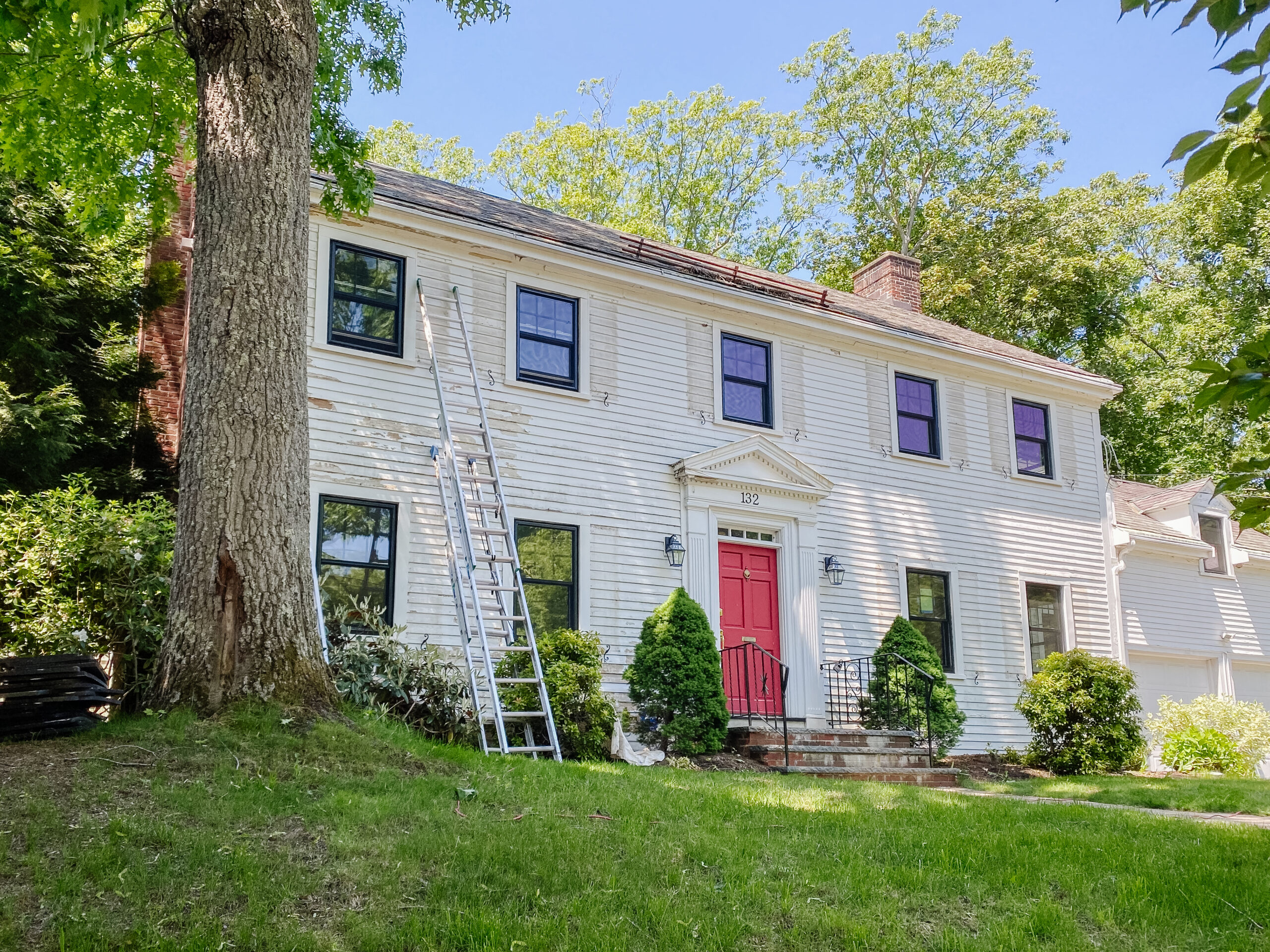
After
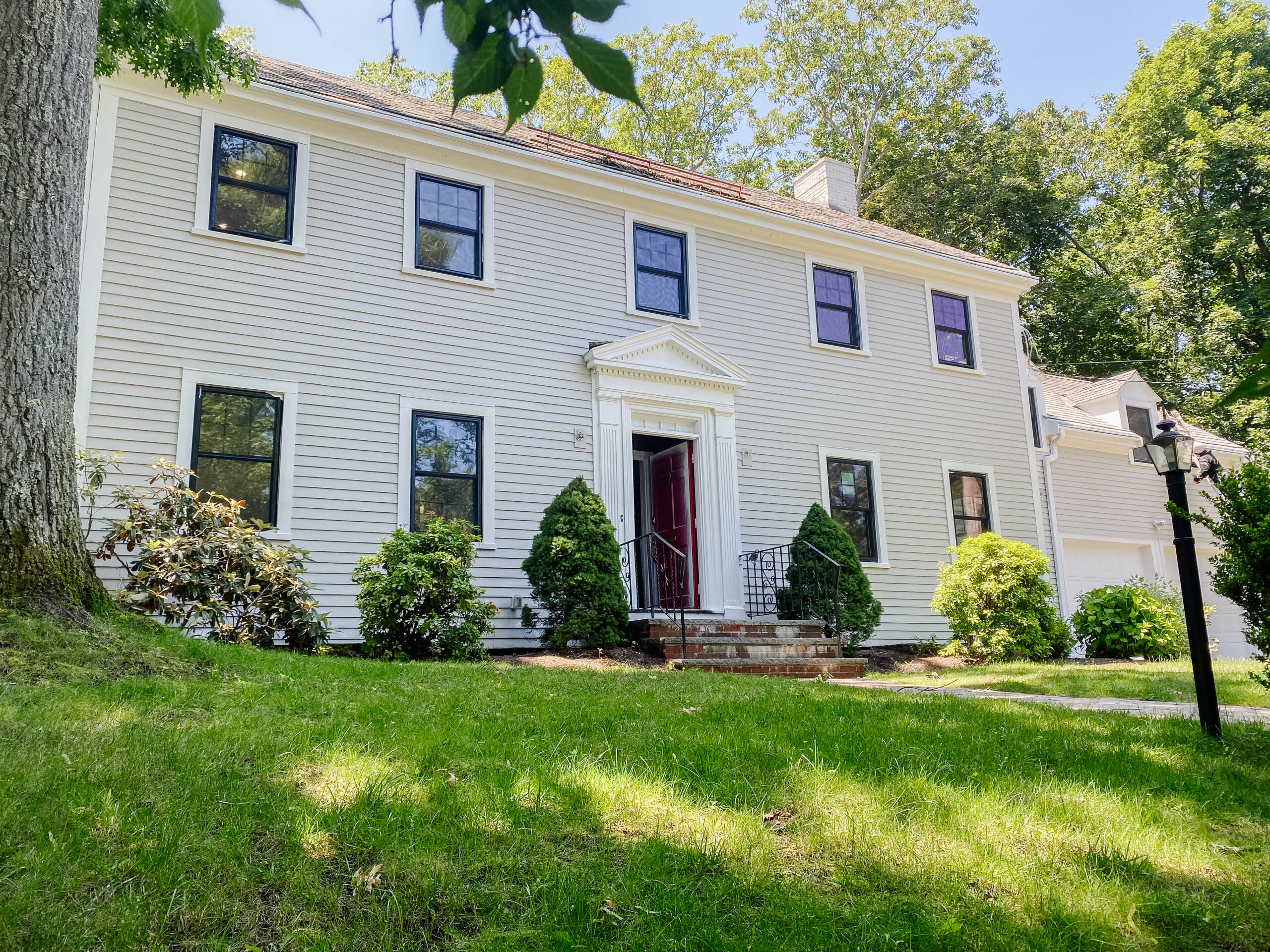
Top 4 Tips for Sampling Paint Colors
After years of renovating houses and curating custom color palettes, we compiled our top 4 tips for sampling exterior paint colors.
1. Buy a Few Different Options
It’s tempting to just eyeball the paint colors at the store and choose your favorite, but I guarantee the color will look different when swatched. Even if you know which paint color you want, we highly recommend sampling a few options. For example, if you want a neutral, test out some creams, tans, and greige colors. If you’re set on olive green, sample different undertones to see which color works best on your house.
Save yourself the headache and test out a range of options in the beginning stages. That way, you can move forward to the painting stage with confidence.
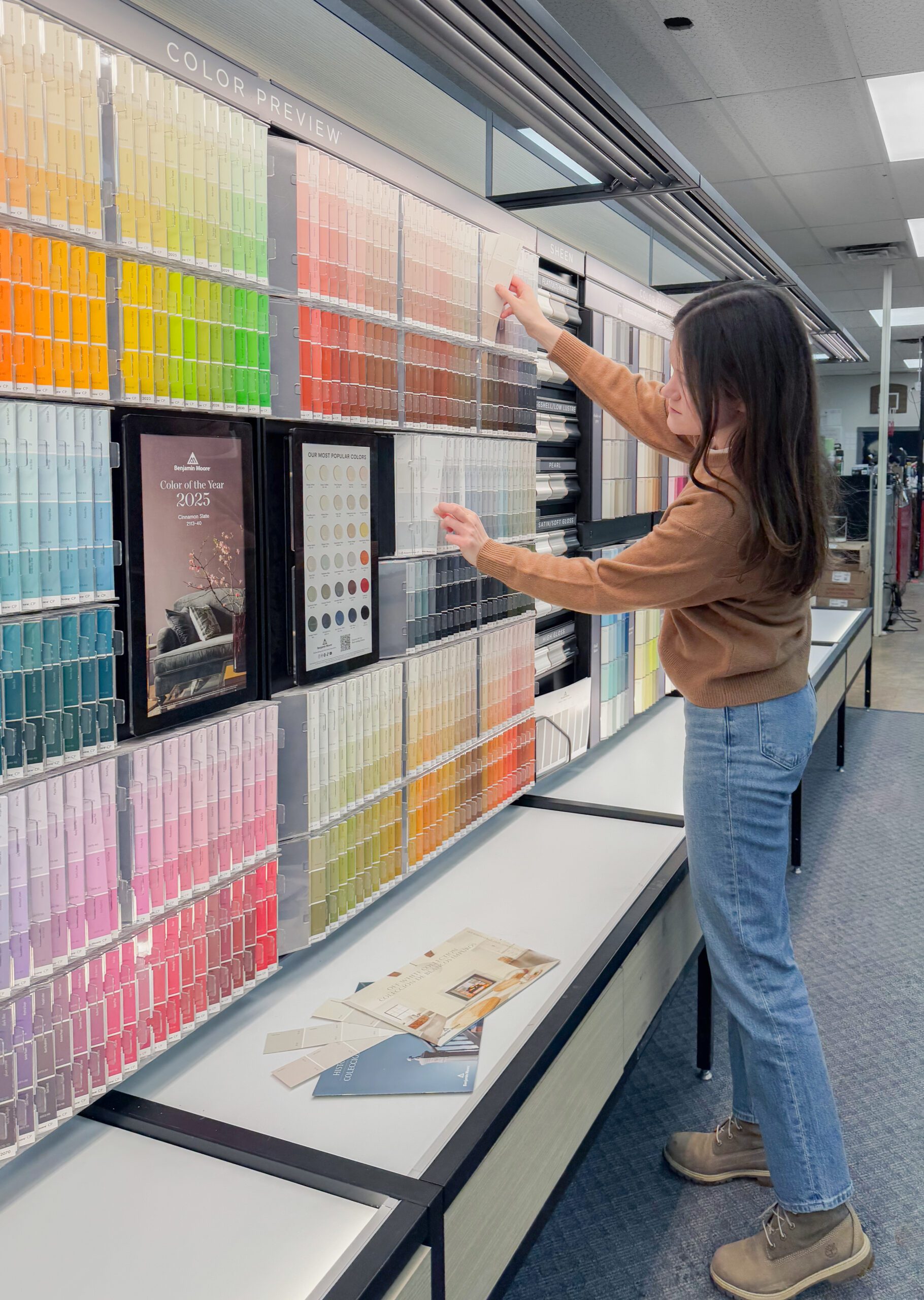
2. Apply Two Coats
Don’t stop after the first coat of paint! It takes at least two coats to get the most accurate color sample. Each 8-ounce paint sample covers around 8 square feet of surface area. Basically, 1 square foot per ounce.
So, a good rule of thumb is to paint two coats of 4 square feet per sample. If you’re sampling different sides of your home’s exterior, divide 4 square feet by the number of walls you’re testing. For example, if you’re sampling 4 walls, paint 2 coats of 1 square foot per wall. This will allow you to maximize every drop of paint in your sample and see the color on different walls around your house.
3. Test Different Sides of Your House
The shade of your sample colors will vary depending on the lighting around your house. For example, the paint color could look lighter on the south side of your home, which tends to receive more direct sunlight. In contrast, the paint color could appear a few shades darker on the north side, which usually gets less sunlight.
Before selecting your favorite sample, observe how the paint color looks on different sides of your home. Make sure to paint your samples close together so you can easily compare.
4. Observe at Different Times of Day
As natural light fluctuates, so does the color of your home. Evaluate the samples in the early morning, midday, afternoon, and evening to see how the colors react to the changes in natural light. After all, you want to love your paint color in the morning just as much as in the evening.
Exterior Paint Color Ranking
Most of the new luxury homes in our area shared the same color scheme—white siding and trim and black windows. We wanted our house to stand out from the rest, so we decided to go darker on the siding.
We tested a range of neutral paint colors, from a warm cream to a dark tan, and settled right in the middle. Let’s jump into our 4 sample choices, from least favorite to absolute best.
1. Swiss Coffee
I want to preface this by saying we LOVE Benjamin Moore’s Swiss Coffee. We color-drenched the interior of our first renovation project with Swiss Coffee and featured it in two subsequent renovations. That said, it was our least favorite exterior neutral paint color in Project Brookline.
Swiss Coffee is one of Benjamin Moore’s most popular off-white colors. It’s a warmer white with yellow, green, and gray undertones. When we sampled it on the facade of our Brookline house, it came off really yellow.
The combination of the yellow undertone in the paint and the direct sunlight on the wall created an almost custard-like color that we hated. Although the color was less yellow on the sides and back of our house, it wasn’t enough to change our minds.
Just like that, our favorite Swiss Coffee was eliminated, and we moved on to Natural Cream.
2. Natural Cream
This was our first time sampling Benjamin Moore’s Natural Cream, and we were impressed with the result. It’s a light greige color, almost like a warm tan with gray undertones. Because of the interplay between warm and cool, Natural Cream actually works well in both color temperatures.
We first learned about Natural Cream from one of our favorite interior designers, Lauren Liess. She combined Benjamin Moore’s Natural Cream and White Dove in her design project (spoiler alert: we used that exact color combination in the interior for Project Brookline.) It was such a warm and inviting color, we knew we had to test it out on the exterior.
Natural Cream was much closer to the color we envisioned, but not quite it. The greige color had a subtle green undertone, which was compounded by the green hues surrounding our house (we live next to a forest.) The final result leaned more green than tan, so we had to pass.
Overall, Natural Cream is a beautiful color, but not in the context of our home’s exterior.
RELATED POST: 6 Must-Know Tips Before You Hire a Home Improvement Contractor

3. Revere Pewter
We struck gold with Benjamin Moore’s Revere Pewter. Similar to Natural Cream, it’s a warm tan with gray undertones. However, Revere Pewter is darker (LRV 55.05) than Natural Cream (LRV 64.78), which is precisely what we wanted for our exterior.
What does LRV mean?
LRV (Light Reflectance Value) measures the percentage of light reflected from a surface. The higher the LRV, the lighter the paint color. So, if Natural Cream is 64.78 LRV and Revere Pewter is 55.05 LRV, you know without even looking at them that Natural Cream is lighter than Revere Pewter.
Although Revere Pewter has green undertones, it appeared more tan than green on our siding. We were thrilled because it was the first neutral we tested that actually translated on our walls.
But the more we stared at the color, the more we worried about how dark it was. We needed to find a middle ground between Swiss Coffee (too light) and Revere Pewter (too dark.)
My genius mother looked at me and asked, “Why don’t we just reduce the saturation by 50%?”. This is a paint technique we have used countless times in the past, and it was the perfect solution for our color dilemma. That leads us to our final and best exterior paint color, Revere Pewter at 50%.
4. Revere Pewter 50% Saturation
Saturation refers to the intensity of a color. The higher the saturation, the more intense or pure the color is. If you love a paint color but want a darker or lighter version, you can adjust the saturation to achieve the perfect color.
The process is simple. Once we determined we wanted a lighter version of Revere Pewter, we went to our local Benjamin Moore store and asked for a sample of Revere Pewter at 50% saturation. The color is pretty much the same, just less pigmented. If you’re unsure how light you want your paint color, ask for a few samples at 25%, 50%, and 75% saturation to compare.
Revere Pewter at 50% was love at first sight. It was the perfect light tan color on all four sides of our house. We highly recommend this color if you want a classic tan without the yellow undertone. We finished the exterior with Benjamin Moore’s White Dove on the trim. These exterior neutral paint colors paired beautifully with our black Pella windows.

Paint Sample Material List
Make sure you have these key materials on hand to make the sampling process quick and easy. You can reuse all of these items in future projects. When you’re done, just wash them off with soap and water.
Foam brush or paint brush
We used foam brushes to sample our paint colors, but you can also use a paintbrush. Foam brushes are cost-effective and can be reused if you clean them thoroughly with soap and water after sampling. Our favorite foam brushes come in a pack of 20 for only $6.99. You can label each brush with the paint color you’re using, so you don’t have to worry about paint residue mixing with other samples.
If you prefer to use a paintbrush, you can buy a brush for each sample or buy one and wash it thoroughly after each use. This is a more time-consuming approach, but it’s cost-effective and low waste.
Paint brushes can vary in quality, so it’s worth investing in one good brush rather than a pack of low-quality brushes. Purdy brushes have always been our favorites. If you wash them after each use, they last for years!
Paint Cup
We bought a pack of 4 reusable paint cups to test each sample. We love that they have a handle to make gripping the paint easier. Plus, they have a magnetic strip to hold your paintbrush and a corner spout to pour back leftover paint after sampling. Each paint cup can hold 16 ounces of paint, which is twice the size of most paint samples.
I can’t tell you how many times we’ve spilled paint from the can and made a huge mess. If you’re neater than us, you might get away with dipping your brush directly into the can and carrying it with you. But for a quick and seamless application, we’d recommend picking up a set of paint cups. After you’re done, just wash them off and reuse them in your next project.
Tarp
Don’t underestimate the power of a tarp. They’re inexpensive, quick to put down, and lifesavers when it comes to cleanup.
We were sampling paint around our front steps and patio, so we couldn’t afford to spill. Before starting, we bought one tarp and moved it with us as we tested samples around the house. By the end of our sampling process, all 4 paint colors were splattered on the tarp instead of our front steps. Phew!
This tarp is portable, lightweight, and easy to store. We love this particular tarp because it’s made from 100% premium, dense cotton. It’s machine washable, and it comes in 10 different sizes to suit any project.
Stir Stick
Always stir your paint sample before you apply it. The stir stick helps redistribute the pigments and liquids that separate in the can. A quick stir ensures that the paint’s color and texture will be consistent throughout.
We picked up a pack of 25 stir sticks for only $4.29 and stirred the paint before each coat. It made a huge difference! If you don’t want to buy an extra set of stir sticks, ask your paint vendor if they offer sticks with samples.
This post is all about exterior neutral paint colors.


